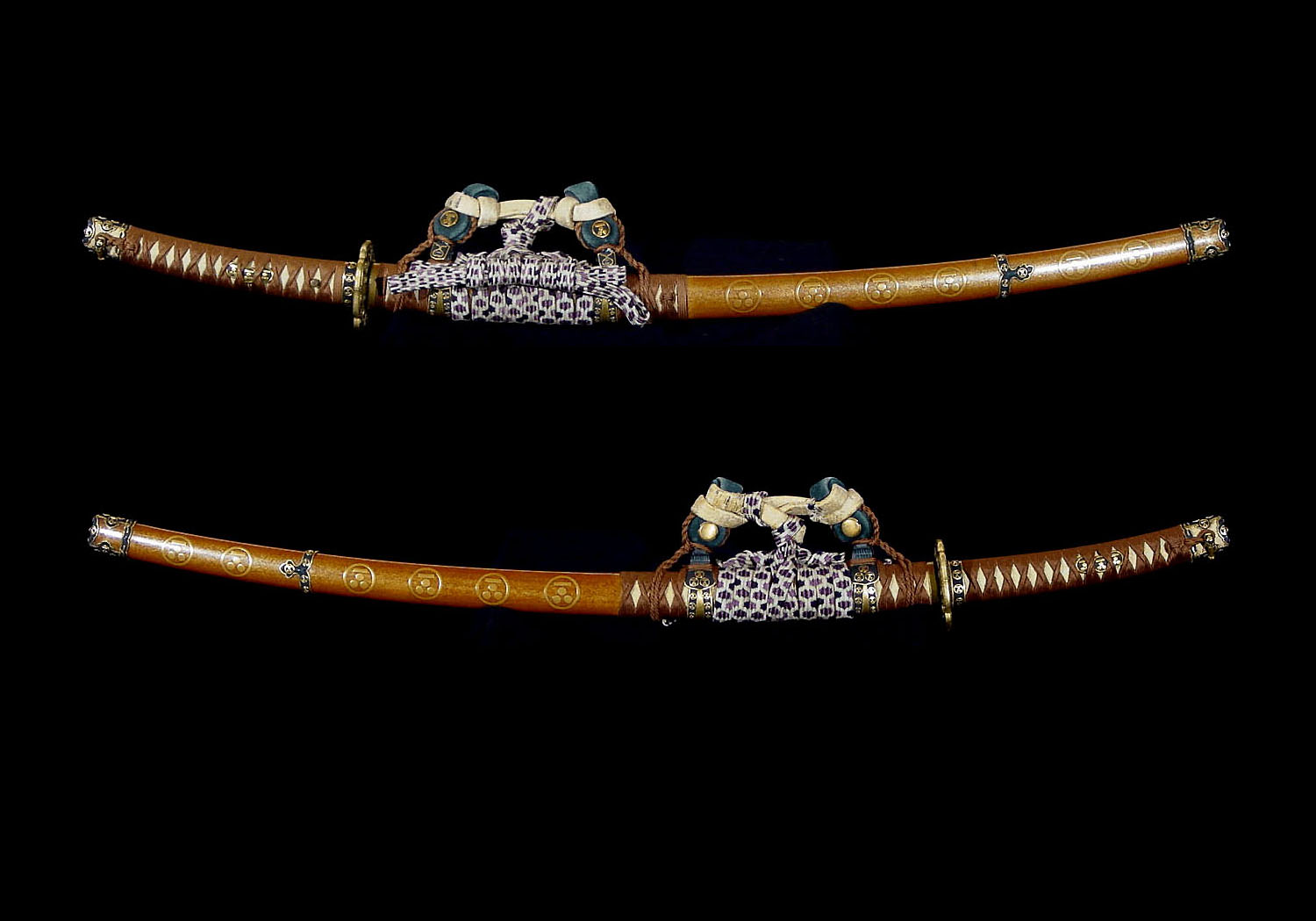It is clear that there are as many collectors as there are tastes, and the Japanese saying “Jūnin toiro” (ten people, ten colors) would be the equivalent of “to each his own” in Spanish. Some collectors are particularly meticulous about aspects of the blade, such as the hamon or jihada. Many decide solely based on whether the blade is signed, regardless of the smith who made it. Others lean towards a specific type of weapon, be it Tantos, Katanas, or Wakizashis, while some are passionate about Koshiraes, placing the craftsmanship of the swordsmith in the background in favor of its wrapping. In this case, we will focus on the latter. It’s true that a good Koshirae can be worth more than many blades, but like the blades, it has to deserve it. In future posts, we will delve more specifically into the elements and schools of Koshiraes, but today we will briefly review the different classes that exist.
Tachi Style Koshirae

As the name suggests, the Tachi-style Koshirae was typically used as a mount for the Japanese Tachi, an older type of blade than the Katana, which was usually longer and more curved for use on horseback. The sword was hung from two hangers (known as ashi), and it features a handle with more curvature than the blade itself. Typically, this handle was secured with two pegs (known as mekugi), while other Koshiraes featured only one peg with the handle.
Katana Style Koshirae

Perhaps the most popular traditional Koshirae style is the Katana style. The sword is worn with the edge upwards, with the blade protected in a similar-sized enclosure. Most Katanas and Wakizashis use this style, although there are many combinations depending on the Tsubas style (in addition to materials, schools, etc.), saya crafting techniques (with mother-of-pearl, lacquered in different colors, akasaka), etc.
Han-Dachi

The Han-Dachi is an alternative style of Koshirae that borrows elements from various styles. For example, the sword is worn with the edge upwards, like the Katana style, but it has kabuto-gane fittings instead of kashira.
Aikuchi

Aikuchi, translated as “meeting mouth,” is a Koshirae style characterized by the tsuka and saya meeting directly. Normally, there is a tsuba that separates these two elements. However, in the Aikuchi style, the tsuka and tsuba touch without any barrier between them. The Aikuchi Koshirae style was first used on the Koshigatana, allowing samurai warriors to keep their swords close to the body while wearing armor. Later on, it became a popular choice among the upper class due to its ease of use and versatility with the tanto. It was frequently carried by women for ritual suicide if necessary or for self-defense.
Shikomizue

The Shikomizue is a widely recognized Koshirae style for its cane-like appearance. The sword is placed in a cane, where it remains hidden and protected. Fictional sword master Zatoichi is said to have used the shinkomizue.
Shirasaya

Although not strictly included as Koshirae, the shirasaya is the best method of preserving Japanese swords as its wood is specifically designed for preservation. Normally, samurais would dismantle their blades from Koshirae at night and store them in shirasaya, as well as during periods when they needed to be stored for an extended period to prevent oxidation and moisture. Some shirasayas are inscribed with an expert’s appreciation of the blade’s origin or signed with an inscription from the swordsmith; these are called sayagaki.
Daisho

Daishos were combinations of a long and a short sword carried by samurais. Daishos are uncommon since it’s difficult to maintain both pieces; they were typically identical or almost identical Koshiraes but of different sizes.




0 Comments